Straighten Damp Hair Without Heat: 7 Safe Methods
Some quick and safe tips to style your moist hair without heat-damaging them.
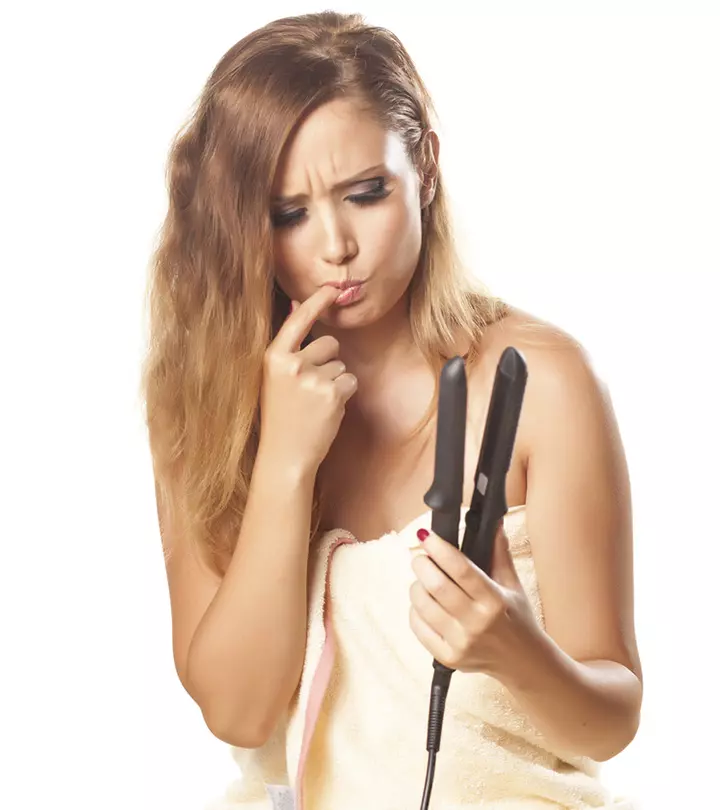
Image: ShutterStock
Your hair is in the most fragile state when it is wet. Sandwiching those damp strands between the hot plates of a flat iron can damage them. Does this mean you can never straighten damp hair? Well, you notice a sizzling sound with steam rising from damp hair whenever you try to straighten it. The heat simply damages the structure of the hair. This may eventually cause hair fall and other hair issues.
 Did You Know?
Did You Know?The hair straightening technique came into existence sometime around the 1890s and became popular in the 1950s.
So, are there any alternatives? This article discusses why you must avoid straightening damp hair and some tips to style your hair without damage. Keep reading to know more.
In This Article
Why Avoid Straightening Damp Hair?
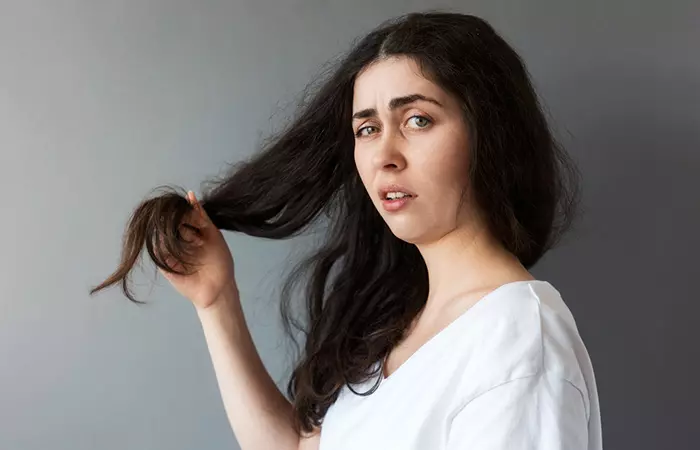
Avoid straightening wet hair as it may cause long-term damage to your hair.
Water boils and turns into steam at 100°C (212°F). Most hair straighteners function in the temperature range of 185-230°C (365-446°F). The temperature of the flat iron surface is greater than the boiling point of water.
Naturally, the second the hot straightener touches your wet hair, the water turns into steam and evaporates rapidly out of the cortex (inner layer of the hair), causing structural damage. This damages the cortex and cuticles and leads to hair breakage, frizzy, and coarse hair (1).
Therefore, you should avoid using a straightener on wet hair. Fortunately, there are ways to straighten wet tresses without using heat! Learn how to do it in the next section.
Key Takeaways
- Straightening damp hair can cause long-term damage.
- When the hot hair straightener touches wet hair, it causes it to turn frizzy or coarse and break.
- Using a microfiber towel, blow drying with cool air, and using a conditioner in your hair care routine can help minimize the damage.
- If you want to use hot tools on your hair, consider using a heat protectant.

How To Straighten Wet Hair Without Heat
- Start with freshly washed hair. Use a microfiber towel to gently towel-dry it until it’s damp and not dripping wet.
- Apply some leave-in conditioner and use a wide-toothed to remove all tangles and distribute the conditioner evenly.
- Part your hair down the middle, creating two equal sections.
- Take one section and twist it tightly, working from the roots to the tips.
- Wrap the twisted section around your head and secure it with bobby pins. Repeat the same with the other section.
- Allow your hair to air-dry in this twisted ‘do for several hours or overnight.
- Once it is completely dry, carefully unravel the twists and use your fingers to gently comb through your hair for a naturally straight look.
- Finish off with a lightweight hair serum for added shine.
Alexandra, a beauty vlogger, shares her experience of straightening her curly hair with the help of a band, some bobby pins, and a scarf. She notes, “I love this so much. The first time I tried it I wanted to tell you guys it wasn’t so easy. It didn’t turn out perfect and it took a lot of trial and error (i).”
In the next section, we have shared some quick hair styling tips. You can follow these when you are in a hurry to get smooth and frizz-free hair without damage.
Tips To Quickly Style Your Hair Without Damage
1. Use A Microfiber Towel

Towel dry your hair to reduce blow-drying time and avoid heat damage. Microfiber towels can absorb water quickly and make it easier to dry hair quickly. Gently squeeze your hair with a microfiber towel. Do not try to rub your hair dry.
2. Do Not Skip The Conditioner
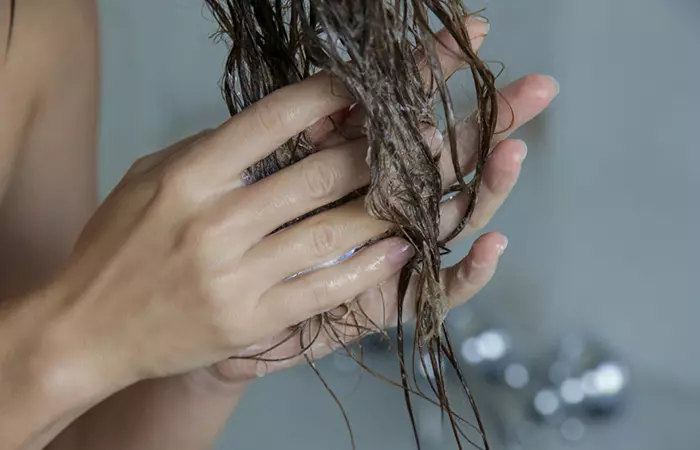
A conditioner moisturizes your hair and makes it soft and manageable. Well-moisturized hair does not have to cling to the water for moisture, and thus, it air-dries faster.
3. Blow Dry With Cool Air

Blow dry your hair on a cool setting as it helps seal your hair cuticles and add shine. It also prevents heat damage.
4. Wash Your Hair At Night
Another option is to wash your hair the previous night. Your hair will be completely dry by the morning and in a better condition for heat styling. This will also save time during the morning rush. Moreover, dried tresses would have a smoother appearance, which will minimize the requirement of heat styling and the damage caused by it. Always remember to use a heat protectant as well before heat styling to further protect your hair from heat damage.
5. Skip The Hair Wash
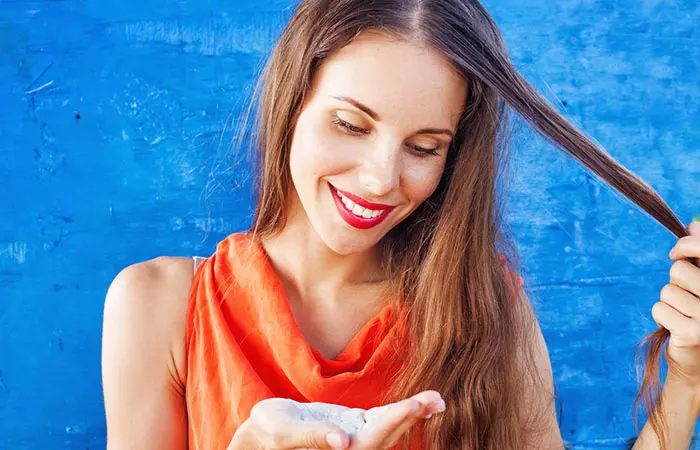
If you do not have time for any of the tips mentioned above, it is better to skip washing your hair altogether and straighten it dry. You may also use a dry shampoo and conditioner to give your hair a quick pick-me-up.
 Quick Tip
Quick TipSince heat straightening may dry out your hair, drink plenty of water, apply oil, and sleep well to retain the natural moisture of your mane.
Infographic: 5 Tips To Keep In Mind For Quick Hair Styling
We all are conscious of the ill effects of using styling appliances on wet hair, especially when we plan on straightening it. You don’t have to avoid experimenting with various looks. We have listed down the most effective tips that will cut short your hair drying time, thereby preventing heat damage and, in turn, speeding up your styling process. Go ahead and check out the infographic below!
Some thing wrong with infographic shortcode. please verify shortcode syntaxIn short, you should not straighten damp hair. Damp or wet hair is more susceptible to damage since it leaves your hair more porous. Applying heat to wet hair leads to breakage, frizz, and a change in hair texture. You may notice your hair feeling rough and coarse. However, if you are in a hurry, you should blow dry your hair on a low setting. And if you are in a pinch, use a dry shampoo to give your hair some texture and volume. Scroll up to read through the additional tips you should follow to straighten your hair without damaging it.
Frequently Asked Questions
Is it okay to straighten your hair every day?
No, straightening your hair every day can lead to hair damage due to excessive heat exposure. Some common side effects of hair straightening include dryness, breakage, split ends, and loss of natural texture.
Should you use hairspray before or after straightening?
Using a heat protectant spray before straightening your hair can save it from damage and lock in the style and moisture. Use a regular hairspray afterward to set the hairstyle.
Is damp hair the same as wet hair?
No. Wet hair is completely soaked and drips water. However, damp hair is slightly wet but not dripping.
Illustration: Can I Straighten My Wet Hair? Is It Safe?
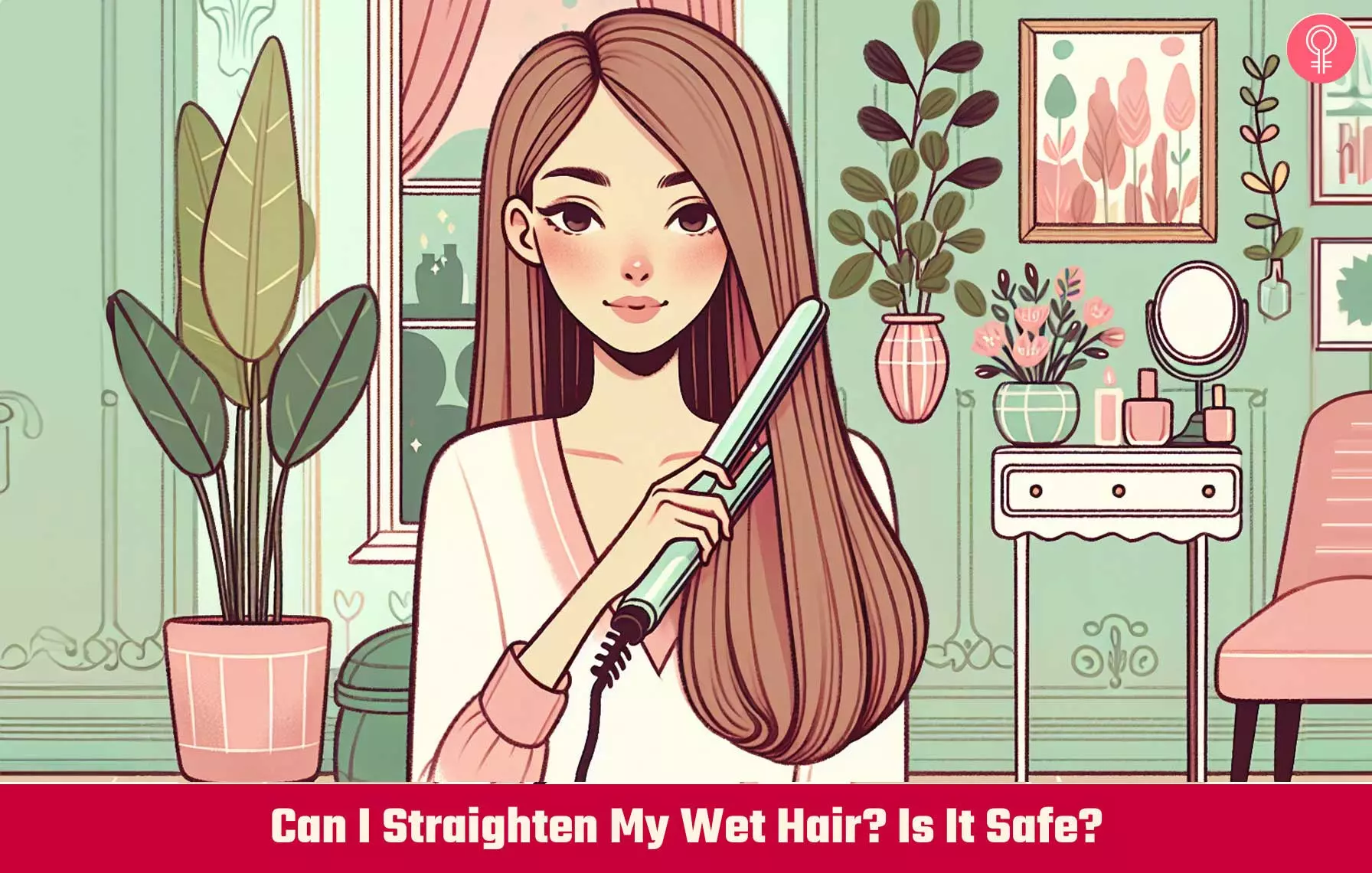
Image: Dall·E/StyleCraze Design Team
Straightening damp hair is not the best idea. But if you really have to do it, check out this video to learn how to straighten wet hair to dry for a sleek look.
Personal Experience: Source
StyleCraze's articles are interwoven with authentic personal narratives that provide depth and resonance to our content. Below are the sources of the personal accounts referenced in this article.
i. Straight Hair WITHOUT Heat!! (Curly Hair Tutorial)https://www.youtube.com/watch?v=hWHG4m16rCM
References
Articles on StyleCraze are backed by verified information from peer-reviewed and academic research papers, reputed organizations, research institutions, and medical associations to ensure accuracy and relevance. Read our editorial policy to learn more.
- The effects of water on heat-styling damage
https://pubmed.ncbi.nlm.nih.gov/21443842/
Read full bio of Dr. Archna Agrawal
Read full bio of Ramona Sinha
Read full bio of Eshna Das
Read full bio of Monomita Chakraborty





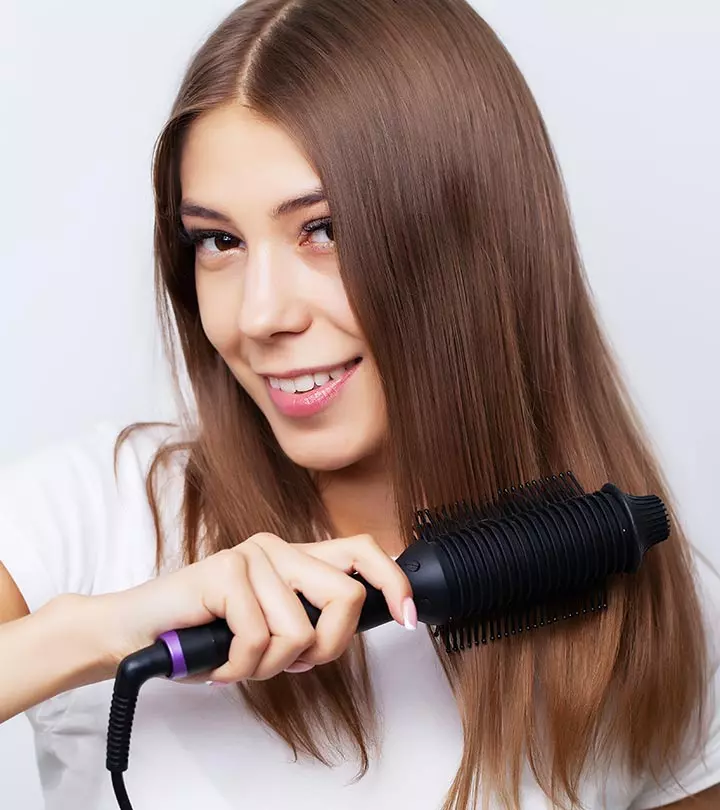

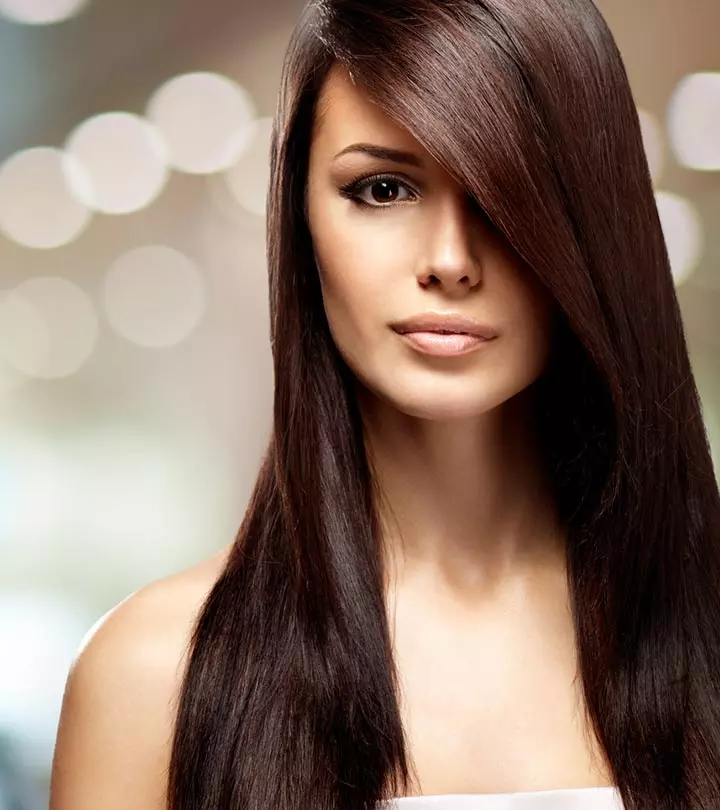
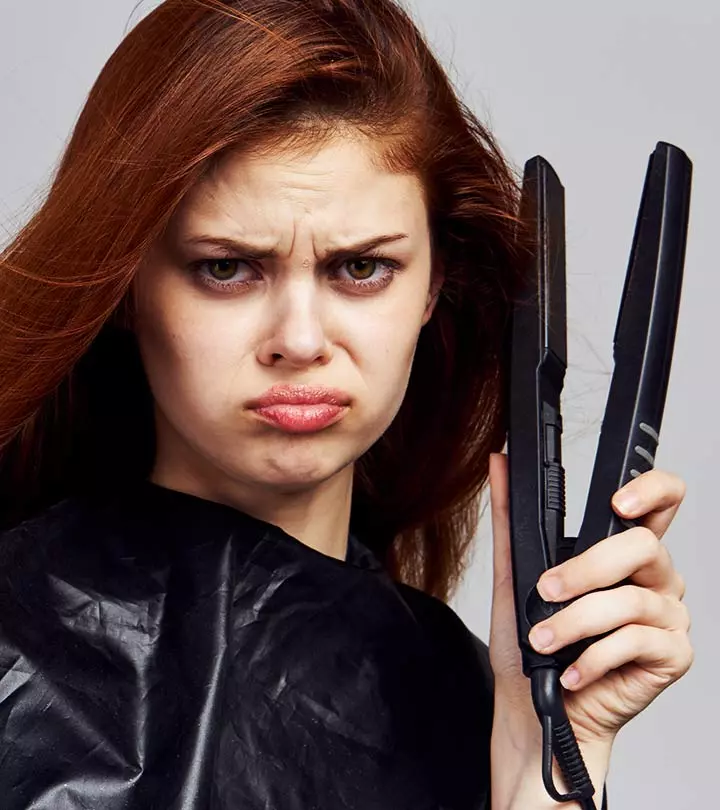
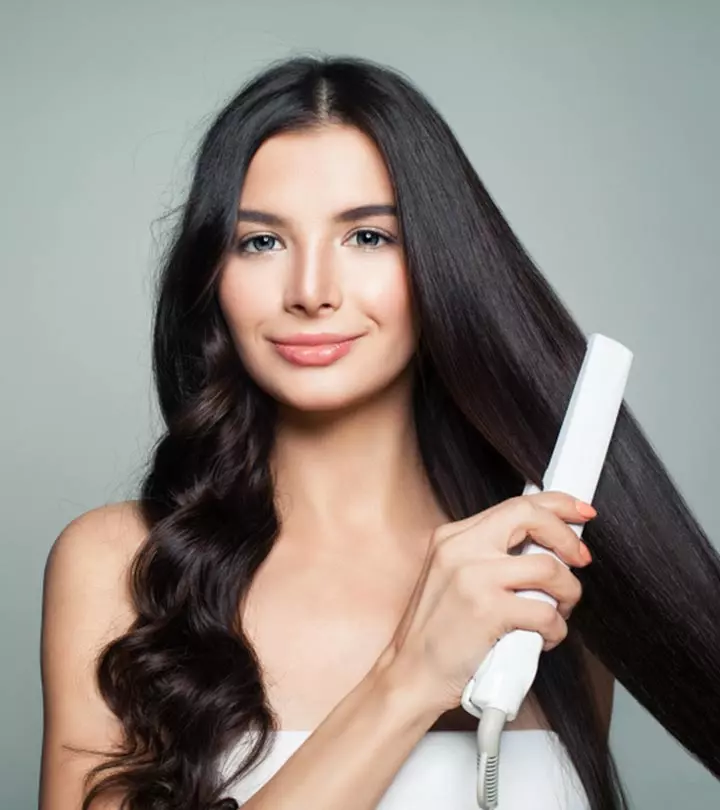
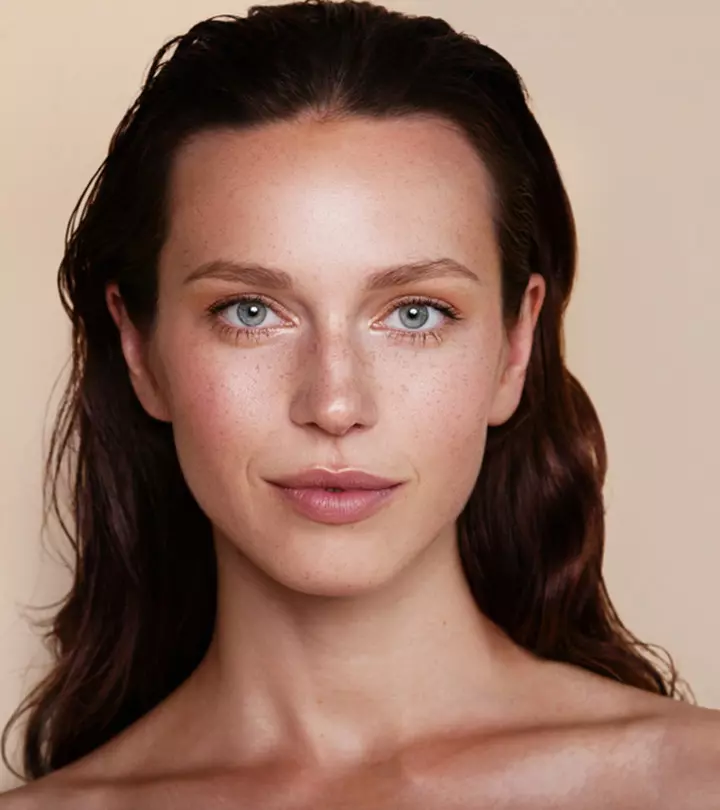
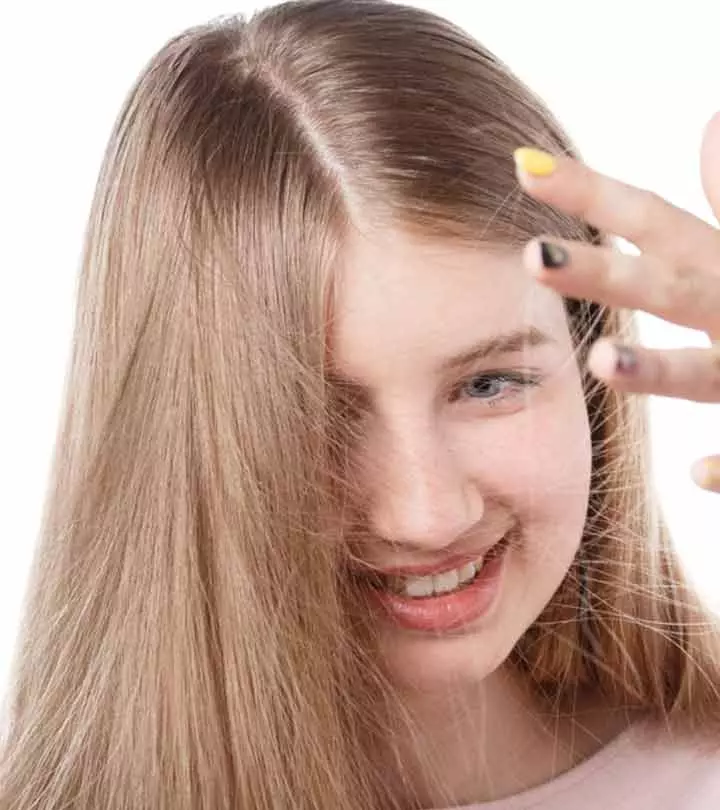

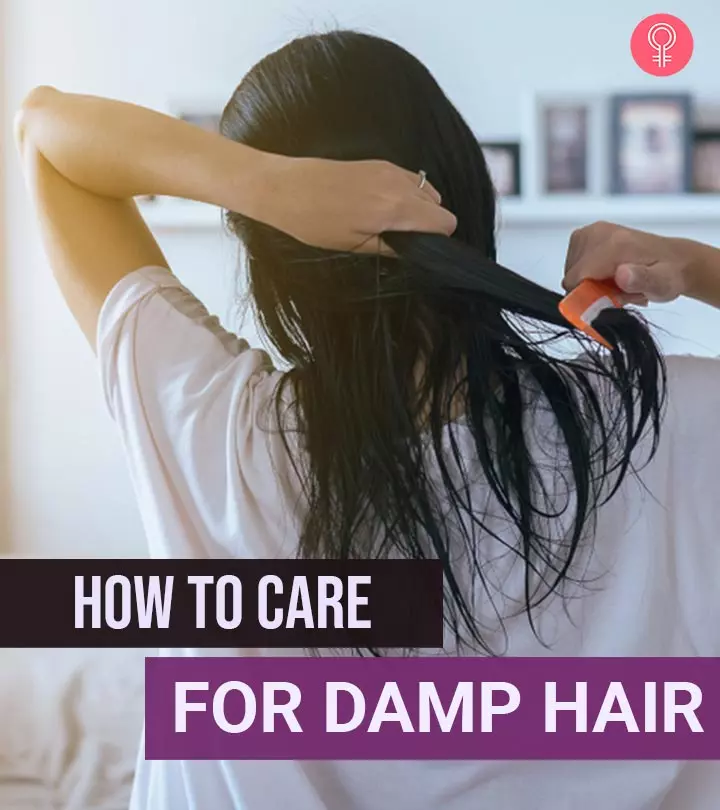


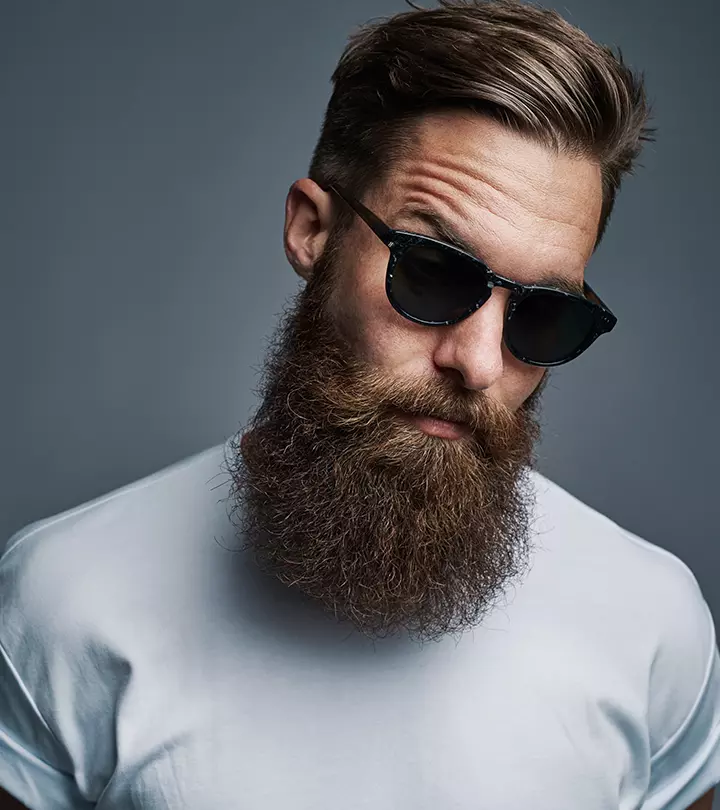

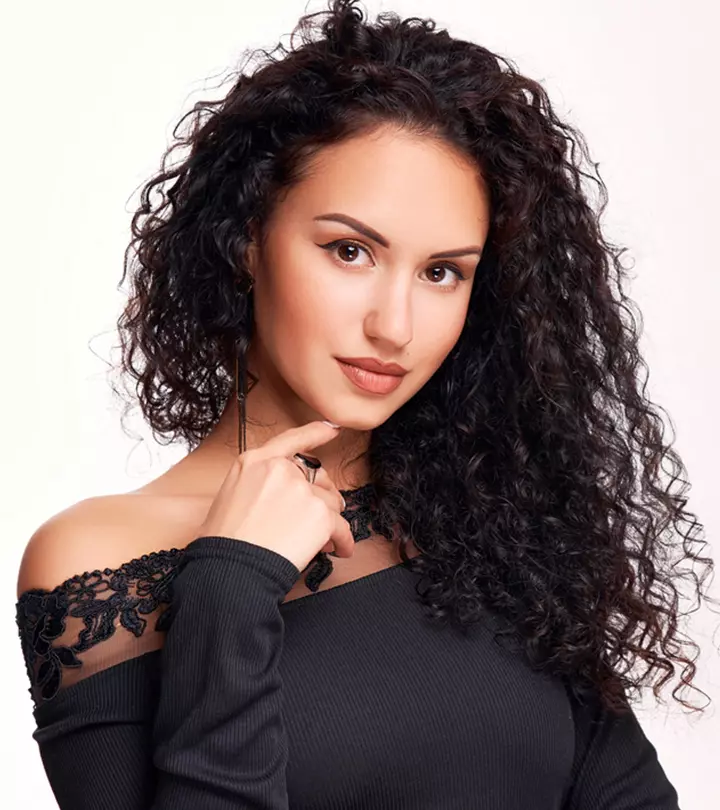
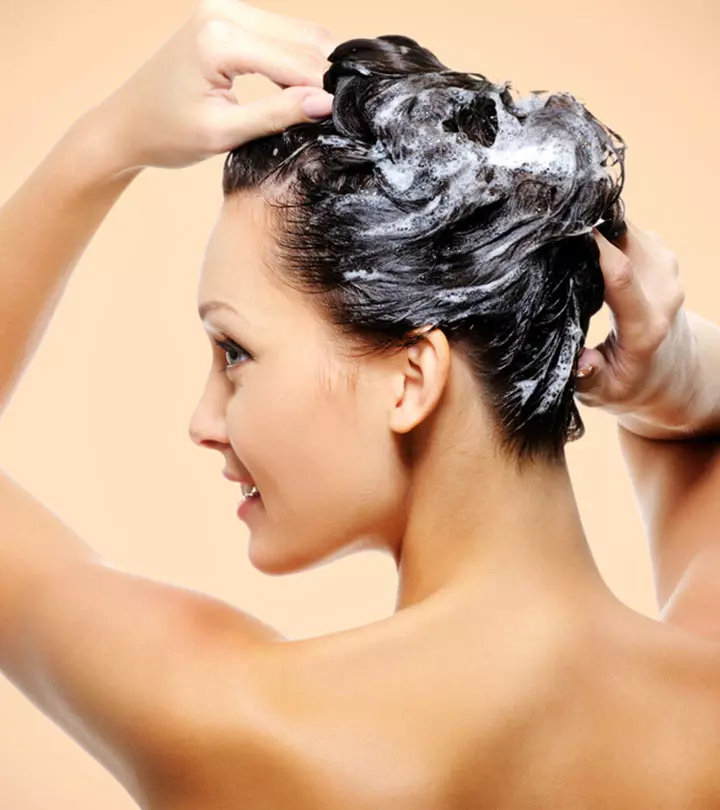
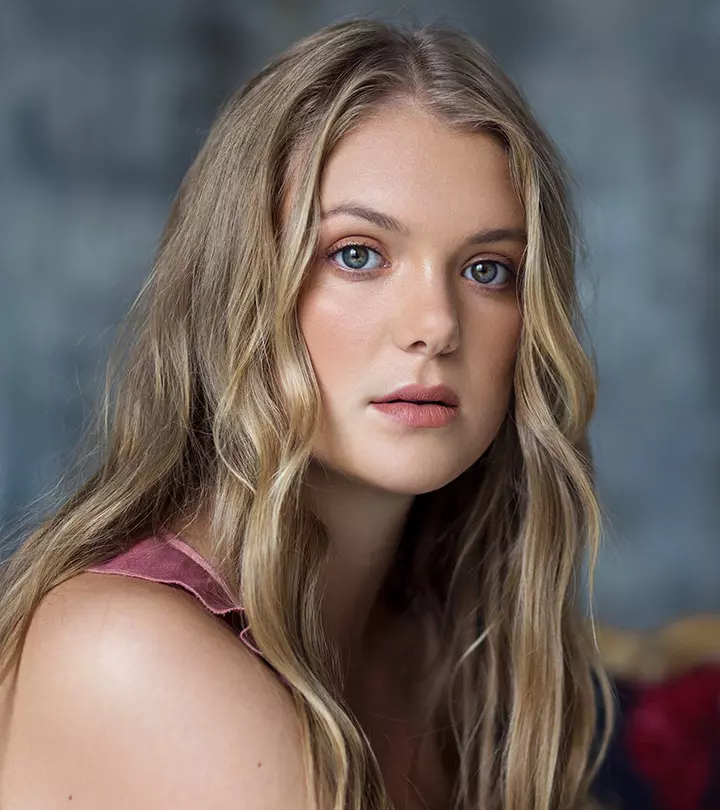
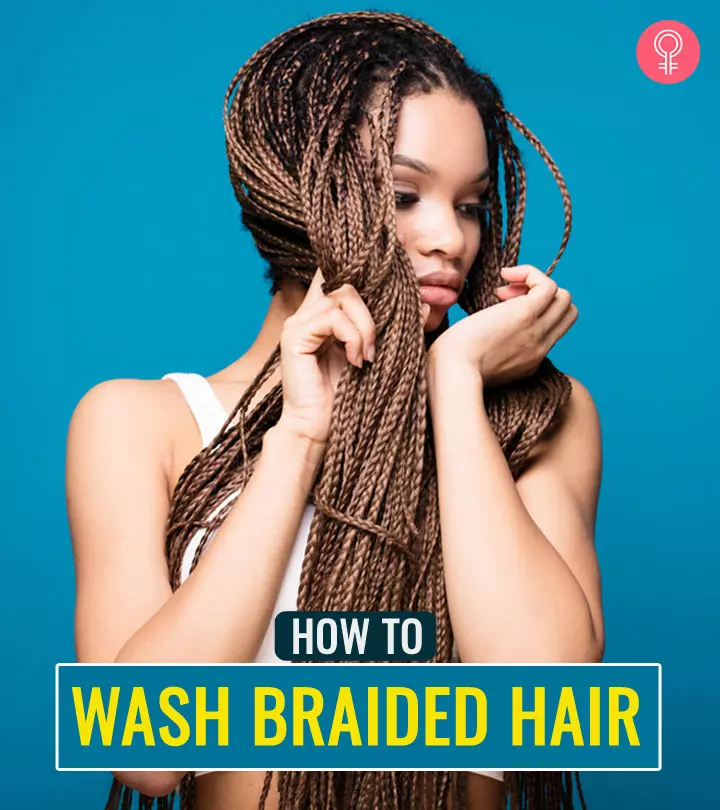
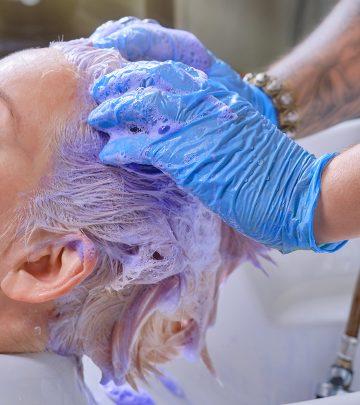
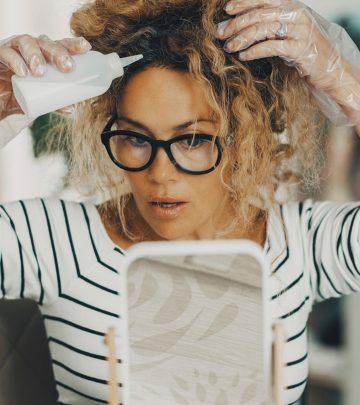
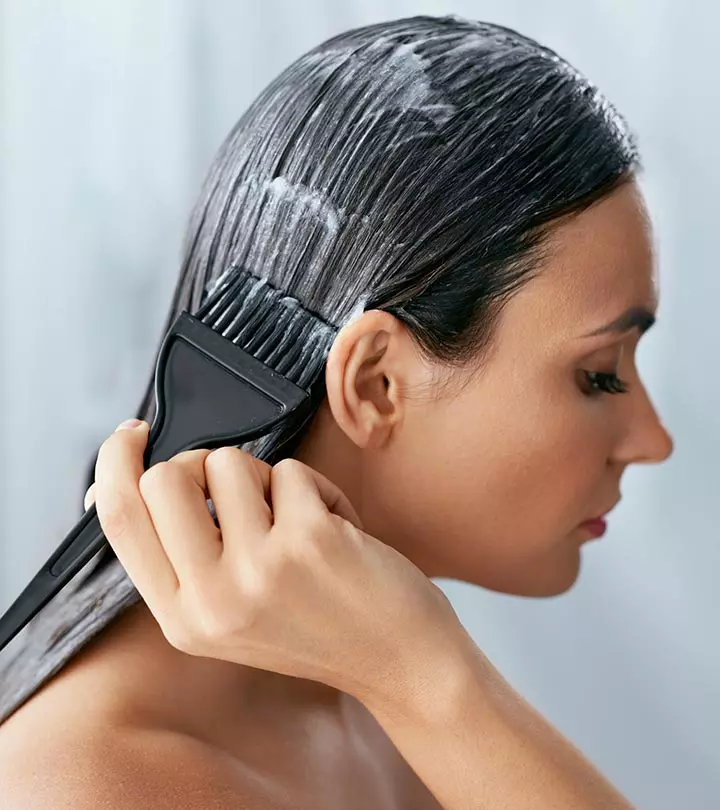
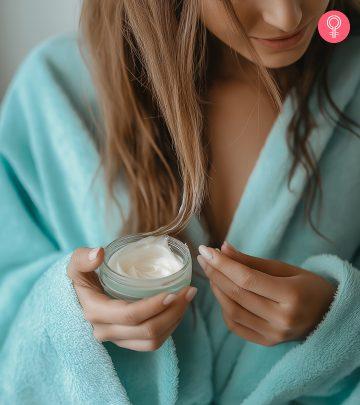
Community Experiences
Join the conversation and become a part of our empowering community! Share your stories, experiences, and insights to connect with other beauty, lifestyle, and health enthusiasts.